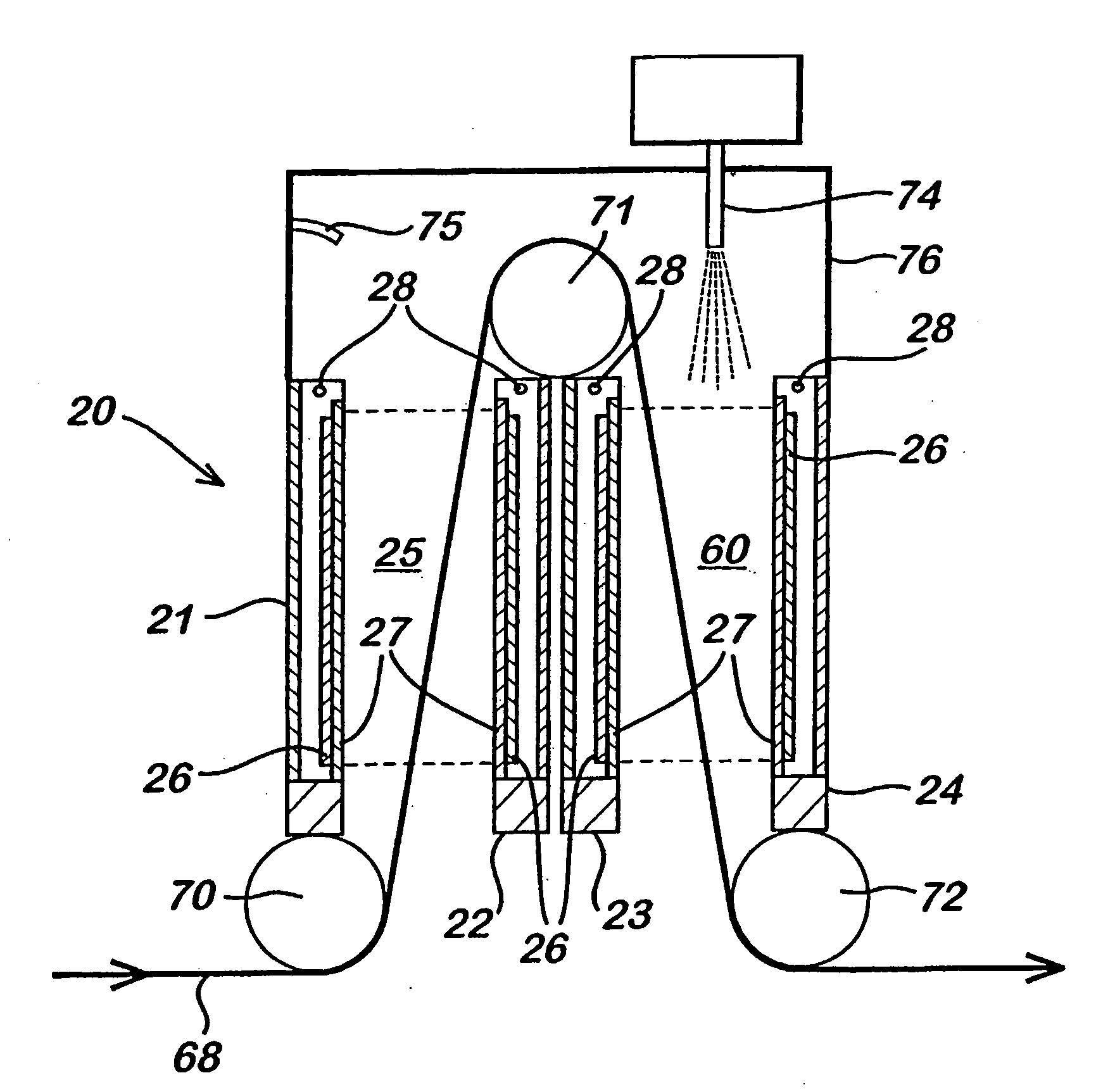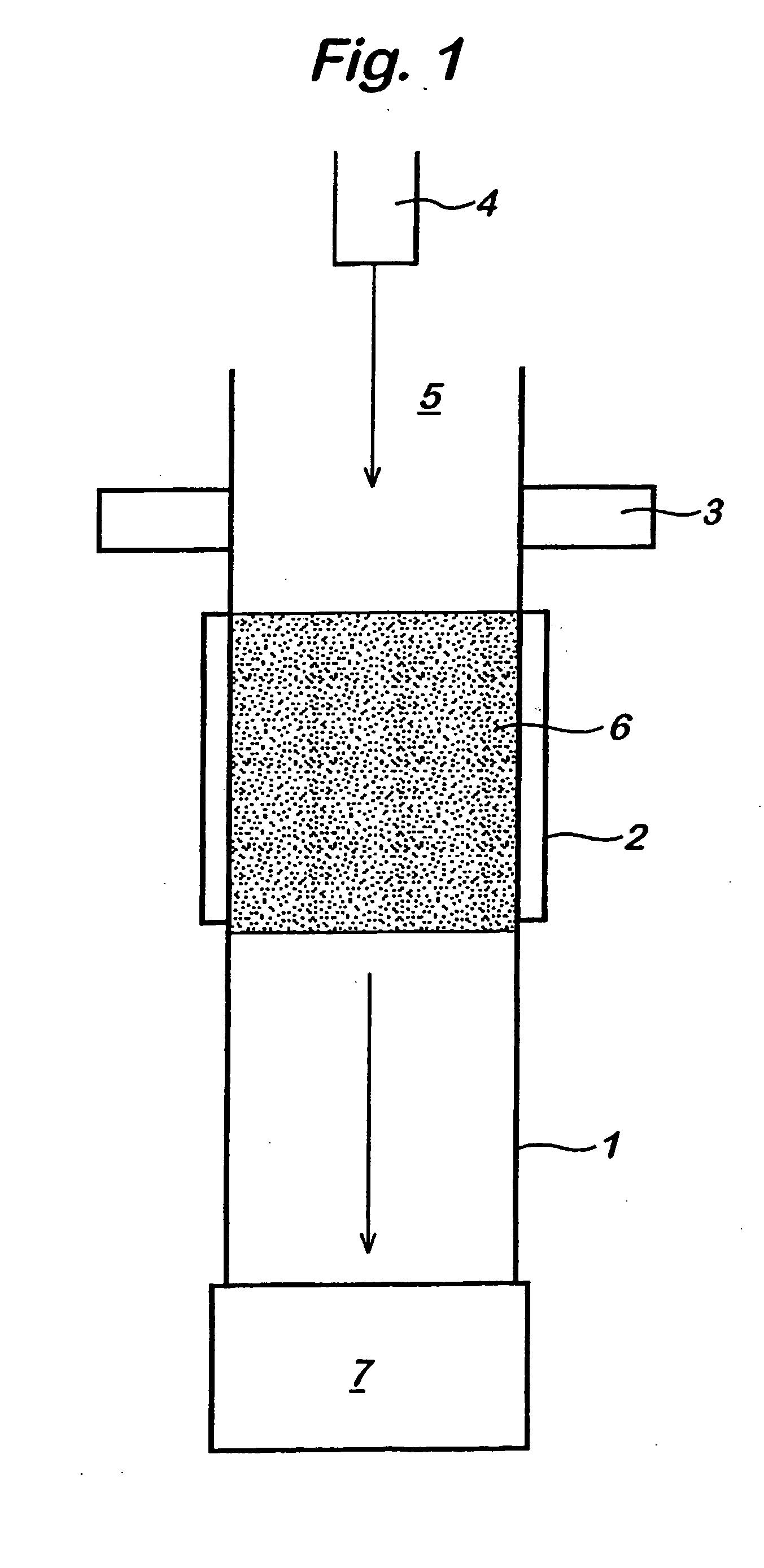Protective coating composition
a coating composition and coating technology, applied in the direction of coatings, plasma techniques, material granulation, etc., can solve the problems of inability or difficulty to achieve processes, limited adoption of plasma technology, low or moderate throughput, etc., to improve compatibility, improve the effect of reducing the number of oxidation and/or moisture, and improving the barrier properties and control of release properties
- Summary
- Abstract
- Description
- Claims
- Application Information
AI Technical Summary
Benefits of technology
Problems solved by technology
Method used
Image
Examples
example 1
[0058] The following example describes the plasma treatment of a rice hull ash sold under the name Ricesil™ (Rice Chemistry Inc. of Stuttgart, Ariz., USA), which is a biogenic amorphous silica, in accordance with the embodiment described in FIG. 2. In this example the distance between the glass dielectric plates attached to the two electrodes was 6 mm and the surface area of each electrode was (10 cm×50 cm). The process gas used was helium. An atmospheric pressure glow discharge was generated by applying RF power of 1 W / cm2 to two electrodes with a frequency of 29 kHz. The operating temperature was below 40° C. The powdered substrate was passed through both the first and second plasma zones using a reel-to-reel mechanism of the type described in FIG. 2 with a guide means being utilised to assist in the transport of the powdered substrate out of the first and into the second plasma regions. The speed of the powdered substrate passing through both plasma zones was 1 m min−1. The rice ...
PUM
| Property | Measurement | Unit |
|---|---|---|
| pressure | aaaaa | aaaaa |
| drop size | aaaaa | aaaaa |
| drop size | aaaaa | aaaaa |
Abstract
Description
Claims
Application Information
 Login to View More
Login to View More - R&D
- Intellectual Property
- Life Sciences
- Materials
- Tech Scout
- Unparalleled Data Quality
- Higher Quality Content
- 60% Fewer Hallucinations
Browse by: Latest US Patents, China's latest patents, Technical Efficacy Thesaurus, Application Domain, Technology Topic, Popular Technical Reports.
© 2025 PatSnap. All rights reserved.Legal|Privacy policy|Modern Slavery Act Transparency Statement|Sitemap|About US| Contact US: help@patsnap.com



